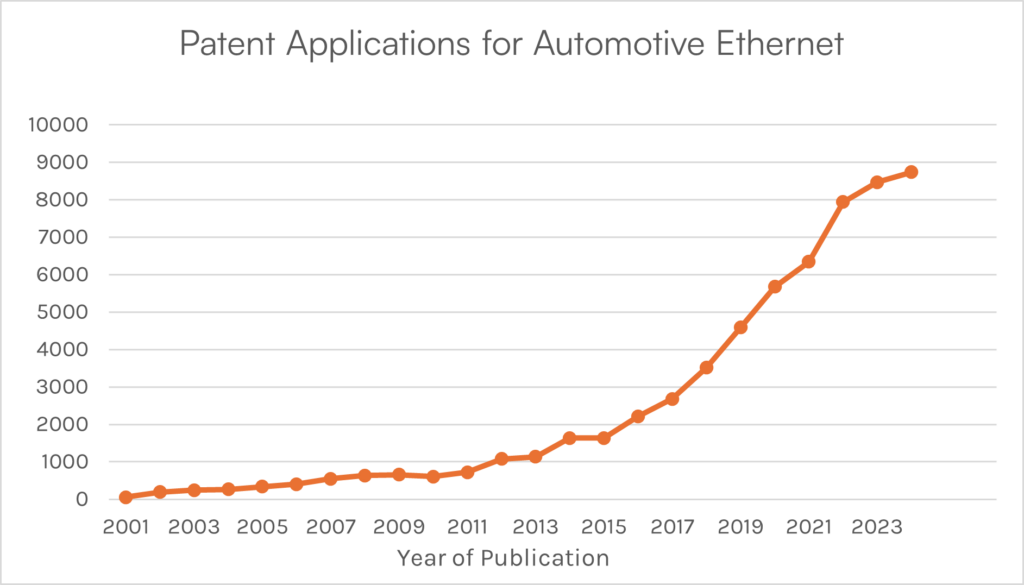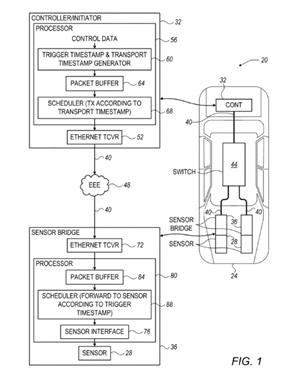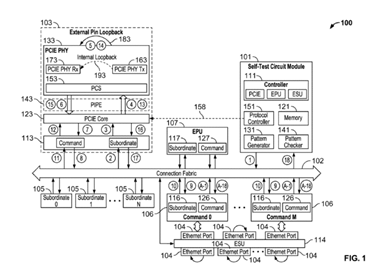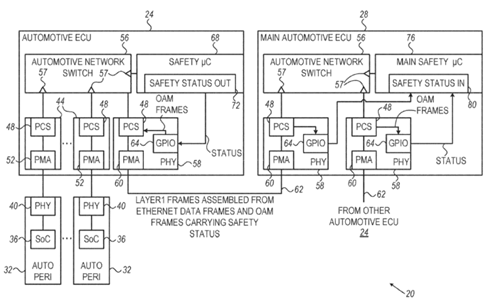19/08/2025
The race to provide the “nervous system” of future cars just intensified. On August 14, 2025, Infineon Technologies AG closed its $2.5 billion acquisition of Marvell Technologies’ Brightlane® Automotive Ethernet business. This deal is more than a simple product-line expansion – it seems to be a bet on the future of software-defined vehicles (SDVs), zonal architectures, and the high-bandwidth backbones that will connect them.
Why Automotive Ethernet Matters Now
Automotive Ethernet is a high-speed, cost-efficient in-vehicle networking technology that replaces older, slower systems like Controller Area Network (CAN) or Local Interconnect Network (LIN) to meet the data demands of modern cars. For software-defined vehicles (SDVs) and zonal architectures, it delivers:
- Microsecond-level sensor sync for lidar, radar, and cameras
- Low-latency data for autonomous driving decisions
- Over-the-air (OTA) updates & feature monetization without hardware swaps
- Reduced wiring weight—critical for EV efficiency
Valued at $3.19 B in 2024, Automotive Ethernet is set to hit $8.18 B by 2032 (13.6% CAGR). (Source: https://www.fortunebusinessinsights.com/automotive-ethernet-market-112187) Ethernet is a key enabling technology for low-latency, high-bandwidth communication. It quickly and reliably transfers large amounts of data between components such as microcontrollers, processors and sensors. By acquiring Marvell’s Brightlane line, Infineon may now be positioned to supply the silicon “glue” for zonal architectures—meeting safety, EMI, and reliability demands while enabling richer in-car software ecosystems.
The Automotive Ethernet Patent Landscape

Patent applications filed for Automotive Ethernet have increased sharply over the past decade. This is consistent with the move toward SDVs and zonal architectures. However, filings appear to have plateaued over the past couple of years, suggesting that a next phase may focus on incremental innovations—for example integration with power electronics and other software systems. Large companies often seek to acquire IP portfolios at this stage rather than develop the technology from scratch.
Recent Marvell patent publications show how Ethernet is evolving from a pure data pipe to an intelligent control platform:

US20250038946A1 describes a system for synchronizing the control and data handling of multiple sensors over Ethernet, particularly in automotive and Energy-Efficient Ethernet (EEE) networks. It introduces three timestamp mechanisms—trigger timestamps for precise sensor command delivery, transport timestamps for scheduling transmissions when network links are awake to save power, and presentation timestamps for aligning sensor data from different sources for processing. By combining packet buffering, timestamp extraction, and scheduling, the technology enables microsecond-level timing accuracy, efficient power use, and synchronized operation of high-bandwidth, safety-critical sensors such as cameras, lidar, and radar in vehicles and other latency-sensitive environments.
Figure 2 – a block diagram illustrating an Automotive Ethernet connection system from US20250038946A1
US 12,332,310 B2 describes a built-in self-test system for modular system-on-chip (SoC) devices that enables automated, protocol-aware testing of multiple functional modules—such as PCIe interfaces, Ethernet ports, and embedded processors—via an internal interconnect fabric, without external test equipment or link partners. The built-in self-test system module can generate and check test patterns, operate modules in their native run-time modes at full speed, use loopback configurations for interface testing, and route data across different protocol domains to verify complete data paths. Designed for high-reliability environments like automotive networks, it supports start-up self-tests and cross-domain validation to reduce testing cost, improve fault detection, and maintain low defect rates.
US 11,863,468 B2 describes a system and method for controlling a General-Purpose Input/Output (GPIO) port on a remote Ethernet Physical layer (PHY) device using Operations, Administration, and Maintenance (OAM) frames embedded directly in the physical-layer (Layer 1) data stream. By inserting special management frames alongside normal Ethernet traffic, a local PHY can send commands—such as setting logic levels, reading inputs, resetting devices, or triggering safety operations—to a peer PHY’s GPIO port without involving higher network layers. This approach reduces latency, simplifies implementation, and enables reliable, independent control channels over existing Ethernet links, making it particularly useful for automotive systems where safety-critical or auxiliary control signals must share the same physical cabling as standard data traffic.

Figure 3 – partial block diagram of a system-on-chip integrated circuit device incorporating a self-test circuit module from US12332310B2

Each of these publications reflects the evolution of Automotive Ethernet technology from a pure data backbone to an intelligent, self-monitoring, and multi-purpose control infrastructure. We may see companies like Infineon integrating such capabilities into Automotive Ethernet physical layers, switches, and SoCs, creating platforms that synchronize complex sensor arrays, perform built-in diagnostics, and provide direct safety/control channels—all over the same network.
Figure 4 – block diagram illustrating an automotive communication system from US11863468
Even if Automotive Ethernet itself has a maturing patent landscape, related fields are seeing greater activity, such as:
- Network Security – Secure OTA updates
- AI Integration – Low-latency links providing better performance
- Power-over-Data-Line (PoDL) – Cutting cable weight
Final Takeaway
The Infineon–Marvell deal shows that control over the in-vehicle network layer is becoming as strategic as power electronics or AI computation power for future EV products. As shown here, the patent literature can provide valuable clues about a sector’s focus and potential future technologies. It will be exciting to watch this space and see what ground-breaking techniques arise.
This article is for general information only. Its content is not a statement of the law on any subject and does not constitute advice. Please contact Reddie & Grose LLP for advice before taking any action in reliance on it.



